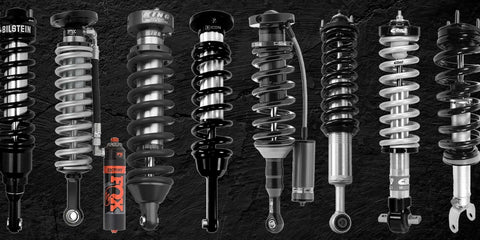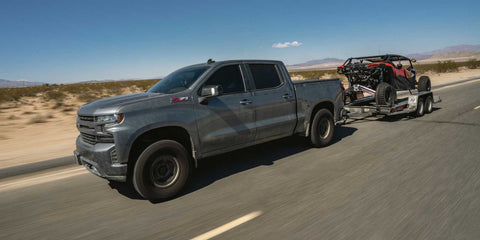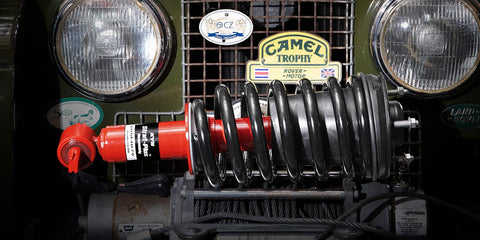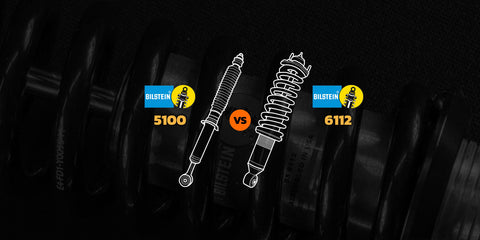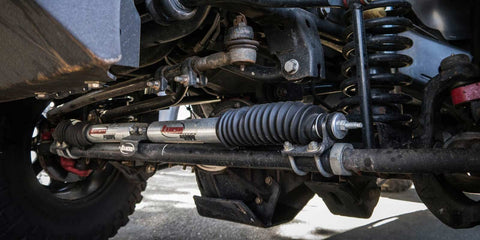Things to Consider When Lowering Your Vehicle
Posted by Sean Reyes on
Front to Back Cars Lowering Mega-Guide
For many enthusiasts, lowering their car is the first and most important modification they do to their vehicles. There is no question that losing a little height will transform the look of your ride, as well as the handling. Heck I don’t think I’ve ever bought a car on the used market that wasn’t dropped on a nice set of wheels! For myself, any many others, it is the bare necessity for any vehicle we own. So all you gotta do is throw a set of coilovers on, crank them down, and lay frame right? Wrong, lowering your car will throw off all your suspension geometry and alignment, as well as create extreme drivetrain angles that can put unnecessary strain on the components. Don’t you worry though, all these things can be fixed with ease.

The modifications you have to do for every single vehicle to compensate for lowering them varies. For the sake of simplicity I will just be covering what to look out for in the most common suspension designs including independent front and rear suspension, as well as solid axle rear suspension.
Almost every car on the road today, excluding trucks and some SUVs, all have some form of independent suspension utilizing at least a lower control arm on each side as well as using rack and pinion steering. This style of suspension allows both the wheels on the axle to cycle through their travel independently of each other, using individual SPC Upper Control Arms for each side for location. These control arms each hinge from their own individual location causing the camber of the wheels to change throughout the suspensions’ stroke, which is known as camber gain. Power is sent to the wheels through this suspension system via a differential that is hard mounted to the rear subframe between the control arms with axles utilizing constant velocity (CV) or U joints so the axles can move up and down as the suspension compresses and extends.
Alignment
Front
Most vehicles come from the factory aligned at (or close to) zero degrees of camber.
- As the suspension is compressed, whether with more weight , nose dive, or decreasing spring rates or overall lengths, the tops of the wheels tilt inwards, gaining negative camber.
- The Suspension gains positive camber as it is unloaded, or lifted, typically seen only on trucks or Jeeps.
- On average most cars gain about -0.75 degrees of camber with every inch it is lowered, which adds up very quickly. Although negative camber in the front can help tire rollover and increased cornering grip, it will increase tire wear and possibly may cause tramlining, or the tendency of a vehicle's wheels to follow the contours in the surface upon which it runs, making lane control difficult.

Depending on the vehicle and how low you decide to go, you may have enough factory adjustment to be able to correct most of the negative camber. For most people lowering their vehicle 1.5” or more, it may be necessary to consider going for coilovers with existing camber plates, ordering camber plates, or using an aftermarket camber bolt or adjustable control arm to get yourself the alignment you want.

Rear
Rear independent suspension in many ways suffers from the same issues as the front. You will encounter increased camber but in some cases you can run into toe issues, and correcting the alignment specs in general can be more difficult or costly overall. Because most cars typically use a macpherson strut front suspension that has the steering connected to it, there is typically more than enough toe adjustment to correct any issues once lowered, while camber is typically easily corrected using camber plates. Unfortunately, in the majority of cases, the rear is not so easily aligned.

- Most independent rear suspension systems use multilink rear suspension, usually consisting of a lower and upper control arm, a traction or trailing arm, and often a toe arm.
- Because the suspension is located by individual control arms managing their own individual alignment curves, camber plates would do little to nothing to adjust static camber effectively.
- Furthermore without the benefit of the massive adjustment tie rods provide, toe adjustment is typically limited. Never fear, most vehicles either eccentric alignment bolts, adjustable arms, or both available in the aftermarket.
Some vehicles like the BRZ/FRS/GT86 also run into an issue that once lowered where the rear wheel has a tendency to sit closer to the rear bumper at ride height, which can cause rubbing issues. To correct this I used an adjustable traction arm, also known as a rear trailing arm, to help pull the wheel back into the center of the wheel well.
Body Roll / Roll Center
Similarly, as you go lower you also lower your center of gravity. As your COG is lowered it gets closer to your roll center, or the theoretical point in which your chassis rolls from, which will minimize a vehicles tendency to roll. In fact, if the roll center and center of gravity are at the same point the vehicle will have no body roll at all and not need sway bars. So where does it go south?

- Some body roll works towards better loading your tires, if your roll center and center of gravity are too close it will be difficult to generate any grip and the car will easily slide. Furthermore, you can begin to experience bump steer, especially on MacPherson strut style front suspension.
- Typically as the vehicle is lowered, the control arm angles will become more extreme, while the tie rods will often be at less extreme angles. If the steering arms or tie rods do not cycle through the suspensions travel on a parallel path to the control arms the vehicle will have a tendency to change toe. Example: Driving over a bump and the tires are forced to steer, thus the name bumpsteer.
- It is incredibly important for all wheel drive and rear wheel drive vehicles have their rear roll center and center of gravity set precisely as getting your roll center wrong will lead to the vehicle being unable to load the tires effectively under throttle input as well as creating the potential for increased wheel hop.
- There are many kits that correct bump steer and roll center simultaneously with tie rods and a roll center correcting ball joint, spindle, strut spacer, or a lowered steering knuckle which will help make your control arms and tie rods more parallel and adjust your roll center to a more effective height. These kits are often called Roll Center Adjusters or RCAS, Bumpsteer kits, or drop knuckles.
- It is incredibly important for all wheel drive and rear wheel drive vehicles have their rear roll center and center of gravity set precisely as getting your roll center wrong will lead to the vehicle being unable to load the tires effectively under throttle input as well as creating the potential for increased wheel hop.
Drivetrain Angle
Independent Suspension
Your suspension and steering angles are not the only things to worry about though if you want to go really low. If the vehicle has independent suspension with Constant Velocity (CV) joint axles, it will be incredibly important to make sure your CV axle angle is not too extreme. Many vehicles, like early Mistubishi Evos, run into an issue that once lowered the CV axle will actually bind and limit suspension travel as well as prematurely wear the CV joints. Another great example being my own 2013 Subaru BRZ lost an axle and left me stranded at just 75,000 miles because it has been lowered on coilovers with drop knuckles in the rear. Other ZN6 chassis owners have ran into premature axle failure lowered as little as 1.5”. To rmake sure I would never shred a CV joint due to being too low again, I installed Parts Shop Max differential and subframe risers that help lift the subframe and differential so that the angle of the CVs would not be so extreme. This is a common modification for Nissan S, Z, and R chassis models, as well as some BMWs, while vehicles like the Honda S2000 frequently use an axle spacer to help solve this issue.

Constant Velocity joints or CVs typically can only handle between 22 and 31 degrees of articulation angle, so it is imperative to make sure your axles are less than 10 degrees off being parallel with the ground at your chosen ride height to minimize any chance of drivetrain bind or failure.
Solid Axles: A Lost Art?
Just because solid axles are old technology, does not mean they can not work well. In fact, solid axles are much easier to tune the geometry of, as well as correct any issues with being lowered. The venerable solid axle, located by a four link and panhard bar, has been at home in countless muscle cars including mustangs through 2014 as well as cars that have become legendary for their handling like the AE86. Furthermore, it is the number one rear suspension and drivetrain of choice by drag racers.

So what happens when you lower your solid axle car? Well your axle will no longer be centered under the car to start. As your suspension cycles through its travel, the panhard bar causes some lateral movement of the axle. Additionally, the panhard bar will no longer be parallel with the axle, minimizing its effectiveness. To correct this, you would use an adjustable panhard bar as well as a drop bracket to mount the panhard bar at a more effective angle.

Another characteristic of solid axle suspension is that of the pinion or drive shaft angle to change throughout the suspension, meaning once lowered, the driveline angle will no longer be ideal at the new ride height. Incorrect driveline angle can lead to bind, axle wrap and wheel hop, as well as increased drivetrain vibration and wear. To correct this most people install adjustable upper and lower control arms to properly set their pinion angle. To correct roll center, and effectively tune the vehicles tendency to squat or jack under load, you would use a traction bracket, or dropped lower control arm mount to effectively raise the axle relative to the control arm height. This will also work to help correct some driveline angle and do away with a lot of wheel hop.
Lowered Car - Navigating the Drop: Things to Consider When Lowering Your Car
Lowering your car is a popular trend among automotive enthusiasts, providing a sleek and stylish appearance while enhancing performance. However, the process involves more than just installing a set of lowering springs or coilovers. Whether you're a seasoned car aficionado or a newcomer to the world of vehicle customization, understanding the intricacies of lowering your car is crucial. In this article, we'll delve into the key considerations when embarking on the journey of lowering your car, using high-quality components from Shock Surplus.

Choosing the Right Suspension Components for Car Lowering
The foundation of any successful car lowering project lies in selecting the right suspension components. Shock Surplus offers a wide range of options, including lowering springs and coilovers. Lowering springs are a cost-effective solution, but if you seek adjustable ride height and performance, coilovers might be the better choice. Consider the driving conditions and your vehicle's intended use to make an informed decision.
Lowered Cars: Understanding the Impact on Alignment
Lowering a car can significantly affect its alignment. Improper alignment not only compromises handling and safety but also leads to uneven tire wear. When using Shock Surplus components for lowering, it's essential to invest in a professional alignment service. This ensures that the wheels are correctly positioned, optimizing performance and tire longevity.
Experience the pinnacle of driving dynamics with Shock Surplus! Elevate your journey with our premium lowered suspension components, tailor-made for the ultimate low suspension car. Unleash performance and style like never before. Explore the dynamic impact of lowered cars with off road parts. Elevate style without compromising performance - unleash a new realm of automotive excellence.
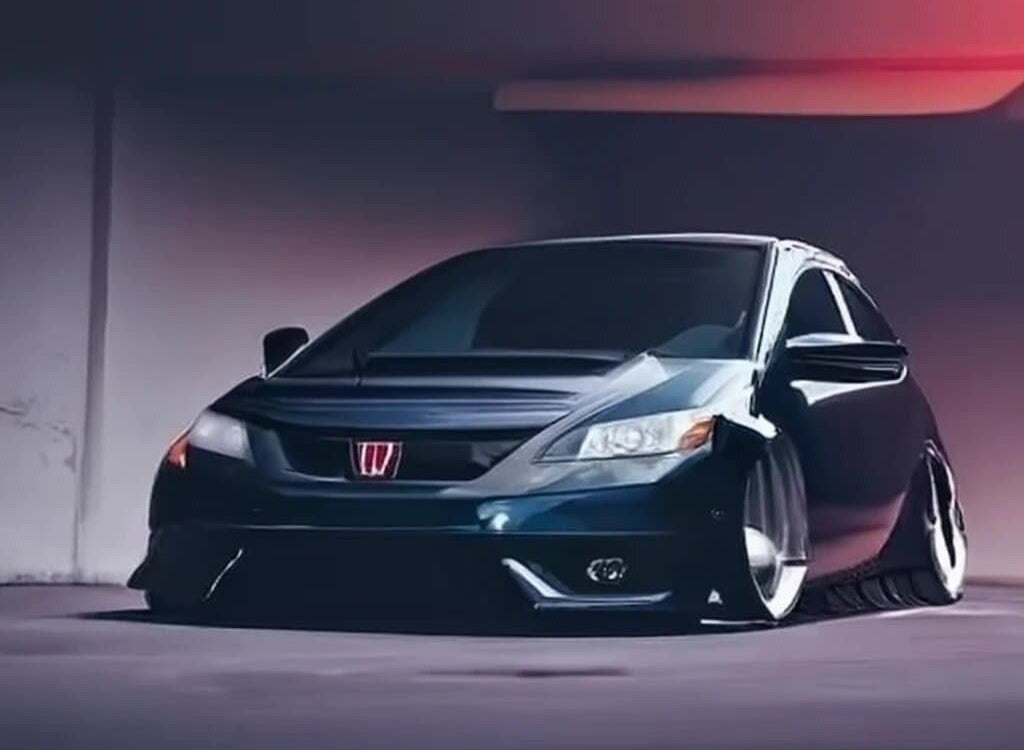
Unleash unmatched performance and style with Shock Surplus! Elevate your ride with car lowered suspension, precision-engineered for optimal handling. Discover the art of the lower car, transforming your driving experience. Trust Shock Surplus for quality and expertise in achieving the perfect stance.
Lower Suspension
Lowering your car involves adjusting the suspension to achieve the desired ride height. Shock Surplus provides components that allow you to fine-tune the suspension for optimal performance. Understanding the intricacies of lower suspension is crucial to achieving the perfect balance between aesthetics and functionality. Research and consult with experts to determine the ideal setup for your specific vehicle and driving preferences.
Transform your driving experience with lower car suspension by Shock Surplus! Discover unparalleled quality in lowering car suspension. Elevate style and performance as you expertly lower your car's suspension. Trust Shock Surplus for precision and excellence in achieving the perfect stance.
How to Lower Suspension: A Step-by-Step Guide
For those eager to take on the challenge of lowering their car at home, Shock Surplus recommends following a step-by-step guide. This involves safely lifting the vehicle, removing the existing suspension components, and carefully installing the new ones. Attention to detail is crucial to ensure a seamless and reliable lowering process.
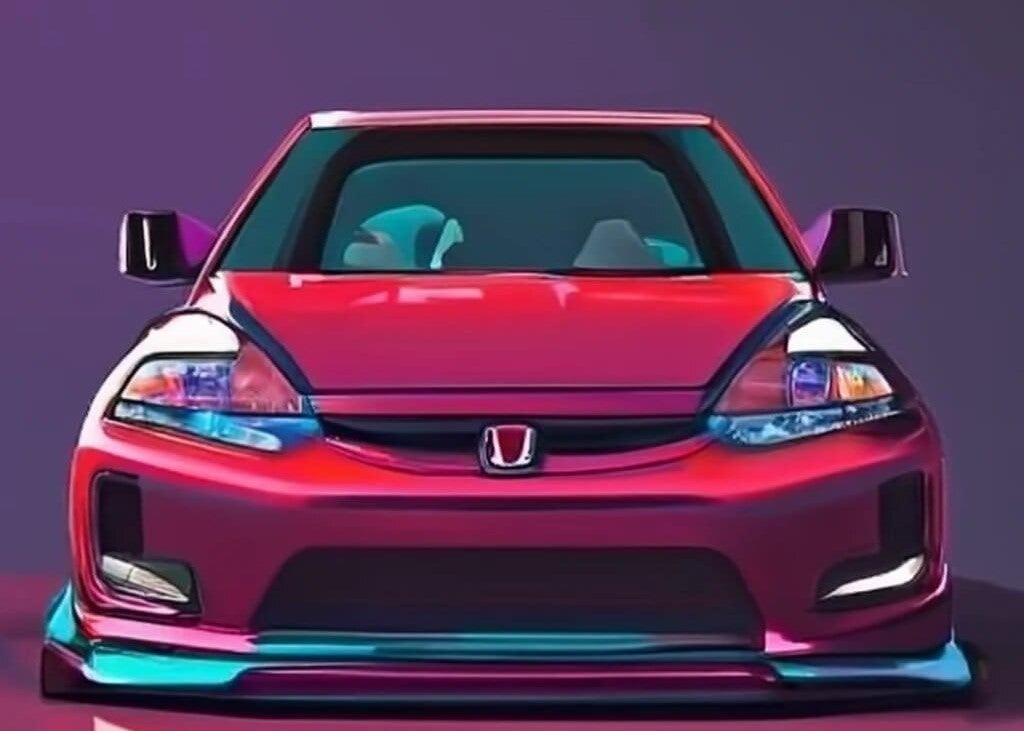
Enhance your driving dynamics with Shock Surplus! Explore precision in car suspension lowering, ensuring a perfectly balanced ride. Experience the allure of a suspension lowered to perfection with our quality components. Elevate your journey with Shock Surplus - where performance meets style.
Effects of Lowering on Car Suspension
Lowering a car doesn't just change its appearance; it also has a profound impact on the suspension system. Shock Surplus emphasizes the importance of considering how the alteration affects ride quality, handling, and overall driving experience. Lowering the suspension too much can lead to a harsh ride, while a moderate drop can enhance both aesthetics and performance.
Performance Enhancement: How to Lower a Car
Many car enthusiasts lower their vehicles with the goal of improving performance. Lowering the center of gravity enhances stability and reduces body roll during cornering. Shock Surplus offers components designed to maximize these performance benefits. However, it's crucial to strike a balance between aesthetics and functionality to ensure a well-rounded driving experience. Discover the art of lowering a car with precision using Dobinsons Suspension. Unlock the perfect balance of style and performance effortlessly. Our innovative solutions redefine lowering vehicle dynamics, ensuring a harmonious blend of performance and sustainability. Embrace the future of driving with precision and eco-consciousness at the forefront.

Unlock the secrets of vehicle customization with Shock Surplus! Learn how to lower a vehicle effortlessly. Lower your car with precision using our expert guidance. Elevate style and handling as you discover the art of how to lower car - your key to a personalized driving experience. Trust Shock Surplus to lower my car, delivering unmatched expertise and quality.
Alignment on Lowered Car
Aligning a lowered car is a critical step that is often overlooked. Shock Surplus recommends seeking the expertise of a professional alignment shop familiar with modified suspensions. This ensures that the alignment settings are within optimal specifications, preventing premature tire wear and maintaining consistent handling characteristics.
Lowering Cars
Elevate your ride with a lowering car by Shock Surplus! Ensure precision with lowered car alignment, offering optimal handling. Explore top-notch components for expert lowering, transforming your vehicle into a sleek, well-balanced masterpiece. Lower cars with confidence, experiencing the perfect blend of style and performance. Trust Shock Surplus for a smoother, customized journey on the road. Upgrade your ride with Rancho shocks for smooth handling and enhanced performance. Experience the perfect blend of style and comfort with lowering cars.

What Does Lowering a Car Do?
Lowering a car improves its aesthetics and lowers the center of gravity, enhancing stability and cornering performance. It also contributes to a sportier appearance.
Does Lowering a Car Make It Faster?
While lowering a car doesn't directly increase speed, the improved aerodynamics and enhanced stability can contribute to better overall performance.
After Lowering a Vehicle, What Do You Need to Do?
After lowering a vehicle, it's crucial to get a professional alignment, ensuring that the suspension and wheels are properly configured. Regularly check for any signs of uneven tire wear and address them promptly.
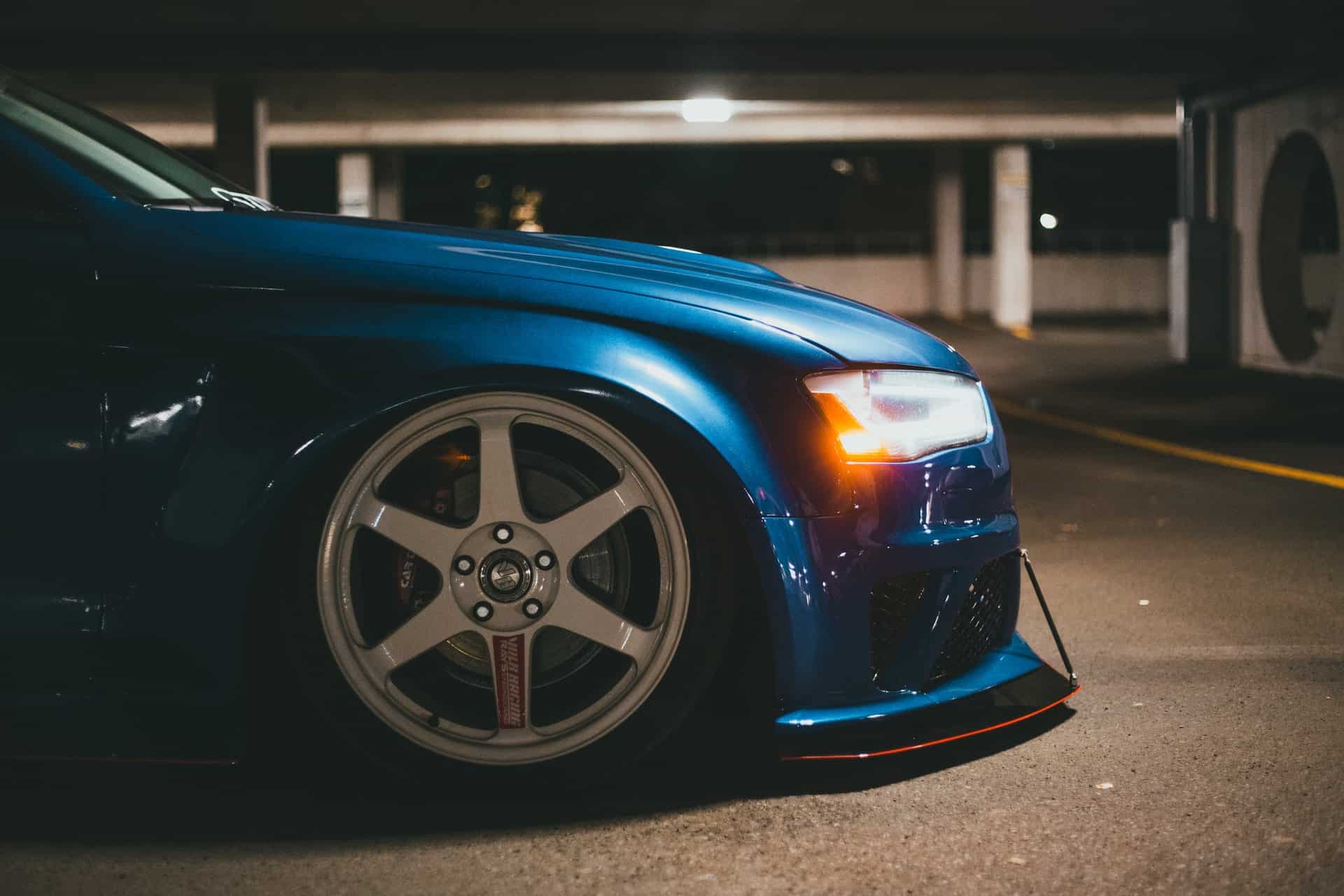
How Much Does Lowering Your Car Cost?
The cost of lowering your car depends on the chosen components and whether you opt for professional installation. Shock Surplus provides quality components at competitive prices, allowing enthusiasts to customize their vehicles without breaking the bank.
How to Lower Suspension On the Car?
Unlock the potential of your ride with our comprehensive guide on how to lower the suspension on your car. Elevate both aesthetics and performance by delving into the step-by-step process. Learn the intricacies of adjusting ride height, selecting the right components, and ensuring proper alignment. From choosing the ideal lowering springs or coilovers to understanding the impact on handling, our guide empowers you to transform your vehicle with confidence. Experience a sleeker profile and improved road-hugging capabilities as you navigate the journey of lowering your car's suspension. Unleash a new level of driving satisfaction with our expert tips and achieve the perfect stance for your automotive masterpiece. Achieve optimal road-hugging prowess with lower suspension paired with Skyjacker shocks. Elevate your driving experience with unmatched comfort and control.

How Much to Lower a Car?
The cost to lower a car can vary widely based on factors such as the type of lowering method (e.g., lowering springs, coilovers), the brand and quality of the components, and whether you're opting for professional installation. On average, the price range for lowering a car in USD can be anywhere from $200 to $1,500 or more. It's essential to consider the quality of the components and the complexity of the installation process. Researching reputable brands and consulting with automotive professionals can help you determine the best options for your budget and customization goals.
Maintaining a Lowered Vehicle
Lowering your car is not a one-time project; it requires ongoing maintenance to ensure optimal performance and longevity. Regularly inspect the suspension components, check for any signs of wear or damage, and address issues promptly. This proactive approach will keep your lowered car in top condition for years to come.

Vehicle Lowering: Optimal Drop Mastering
Lowering your car is a thrilling venture that can transform both its appearance and performance. By considering the factors mentioned above and using high-quality components from Shock Surplus, you can achieve the perfect balance between style and functionality. Whether you're a seasoned enthusiast or a novice in the world of car customization, taking the time to research, plan, and execute the lowering process will result in a vehicle that turns heads and delivers an exhilarating driving experience.

